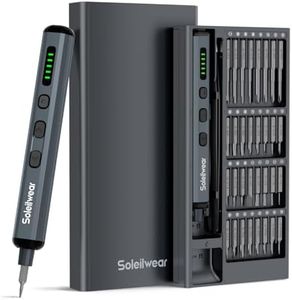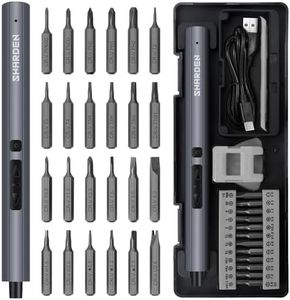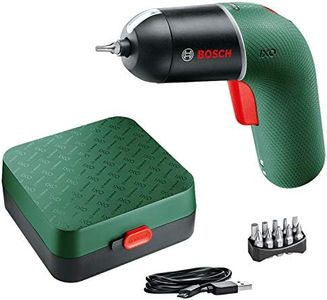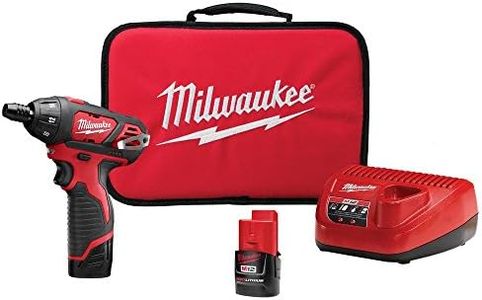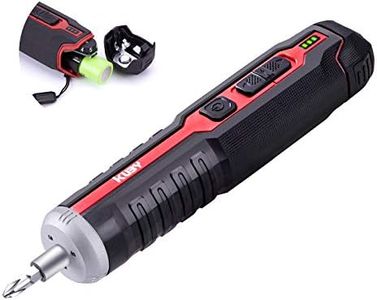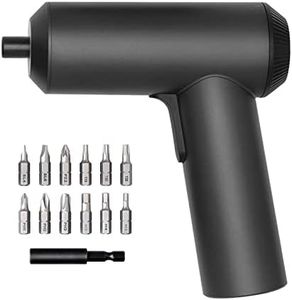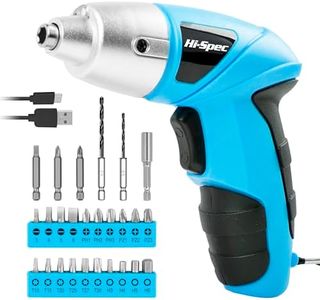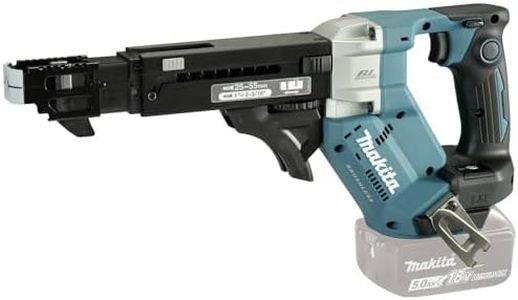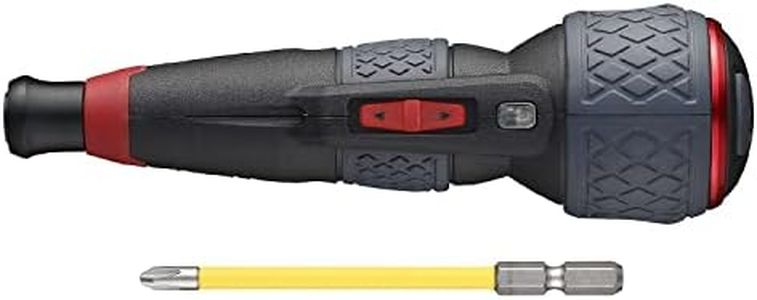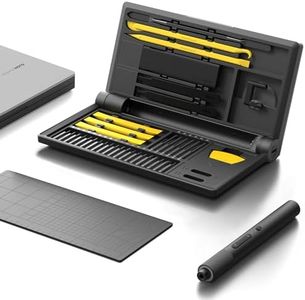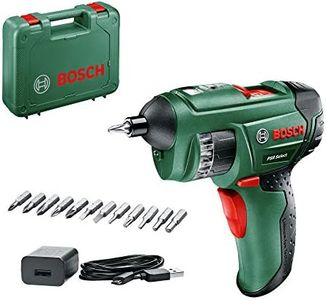We Use CookiesWe use cookies to enhance the security, performance,
functionality and for analytical and promotional activities. By continuing to browse this site you
are agreeing to our privacy policy
10 Best Electric Screwdrivers
From leading brands and best sellers available on the web.Buying Guide for the Best Electric Screwdrivers
Picking the right electric screwdriver can make DIY projects, furniture assembly, and household repairs much easier and faster. It's important to consider how often you plan to use the tool and for what types of tasks, as this will help you choose a screwdriver that matches your needs in terms of power, comfort, and versatility. Getting familiar with the main features will ensure your investment will serve you well, whether you're a casual user or tackling frequent home improvements.Power (Voltage or Torque)The power of an electric screwdriver is usually indicated by its voltage (for cordless models) or its torque rating (for both corded and cordless models). Higher voltage or torque means the screwdriver can drive screws into tougher materials, like thick wood or metal, more easily. Lower-powered screwdrivers are lighter and easier to control, making them better for lighter tasks such as assembling furniture or working with soft woods. If you mostly handle simple tasks, a low to mid-range power suffices. For tougher jobs, like construction or heavy repairs, a higher power tool is preferable.
Speed (RPM)Speed refers to how quickly the screwdriver can turn, measured in revolutions per minute (RPM). Higher speeds are good for driving screws faster, while lower speeds give you more precision and control, especially for delicate materials. Many screwdrivers have variable speed settings, which is helpful for adapting to different projects. If you need flexibility, choose a model that allows control over speed. For simple, repetitive jobs, a single-speed tool may be enough.
Battery Type and LifeCordless electric screwdrivers rely on batteries, usually lithium-ion or sometimes nickel-cadmium. Lithium-ion batteries are lighter, charge faster, and hold a charge longer. The capacity, measured in amp-hours (Ah), tells you how long the tool will run between charges. If you use the screwdriver for long sessions or often forget to recharge, look for higher capacity batteries. For occasional use, smaller batteries may keep the tool lightweight and easy to handle.
Size and WeightThe size and weight of an electric screwdriver influence how comfortable it is to use, especially during prolonged tasks or in tight spaces. Compact, lightweight models are easier to maneuver and less tiring to use for overhead or detailed work. Larger, heavier tools tend to have more power but may be bulky. Consider what feels comfortable in your hand and if you’ll need to reach into small spaces regularly.
Ergonomics and GripGood ergonomics mean the screwdriver is comfortable to hold, with a grip that feels secure. Look for features like soft-touch handles or molded shapes that fit your hand naturally. If you have wrist issues or anticipate long usage periods, ergonomics become even more important. Try holding a few tools before choosing, and prioritize models that reduce fatigue or slippage.
Chuck Type and Bit CompatibilityThe chuck is the part that holds the screwdriver bits. Some models use a keyless chuck, allowing you to change bits easily without tools, while others might have quick-release systems. The size of the chuck also affects what bits you can use. For most home tasks, a standard size will suffice, but if you plan on using specialized bits, check compatibility. Think about what types of screws and jobs you plan to tackle to pick the right chuck system.
Additional Features (LED lights, Clutch Settings)Many electric screwdrivers come with extra features like built-in LED lights to help you see in dark corners, adjustable clutches to prevent over-driving screws, or forward/reverse switches for easy screw removal. Consider which features will actually make your work easier. If you often work in poorly-lit areas, an LED might be essential. If you deal with a range of screw sizes, multiple clutch settings can help prevent damage to materials.


